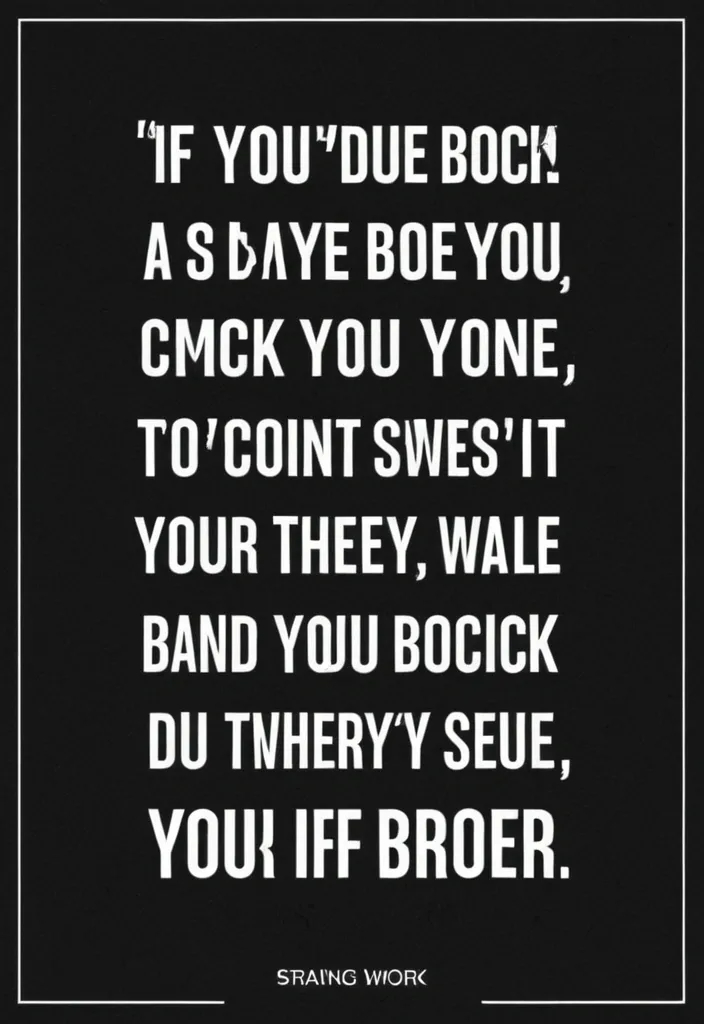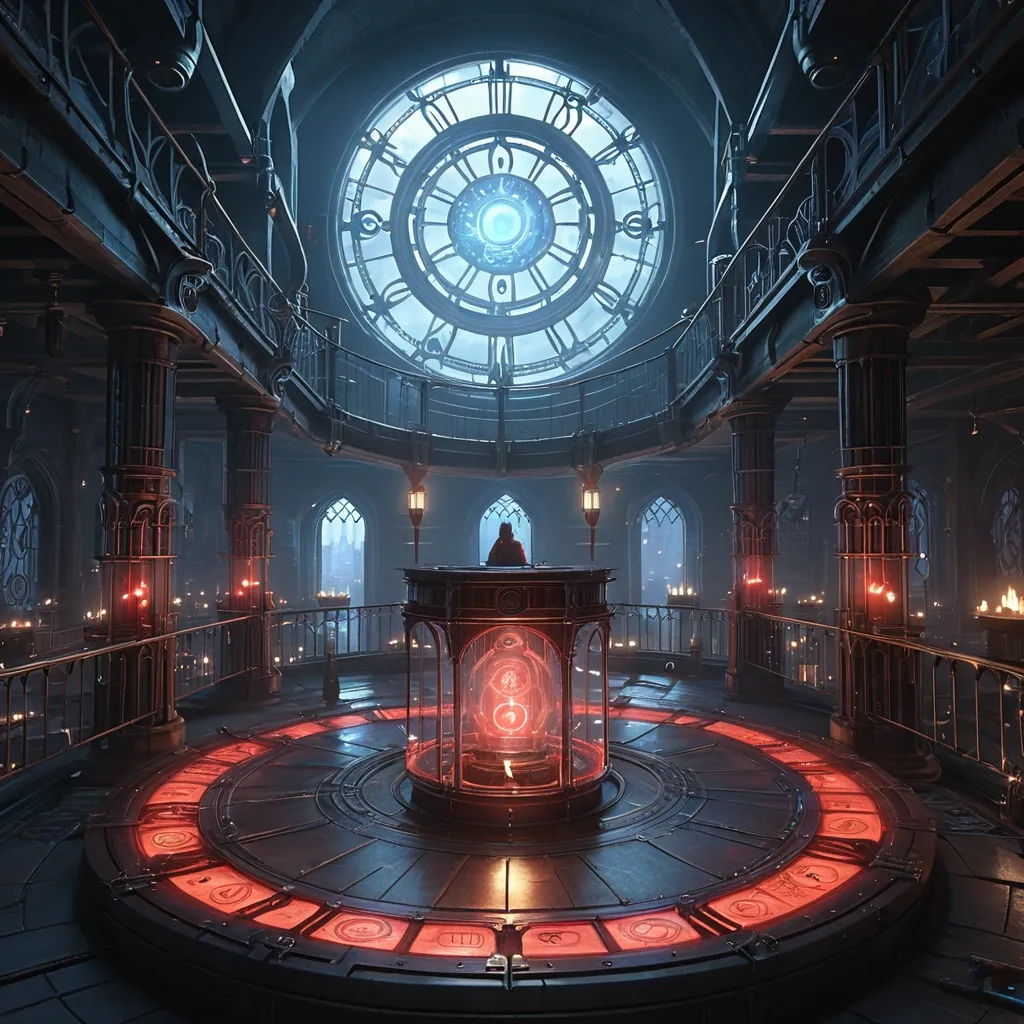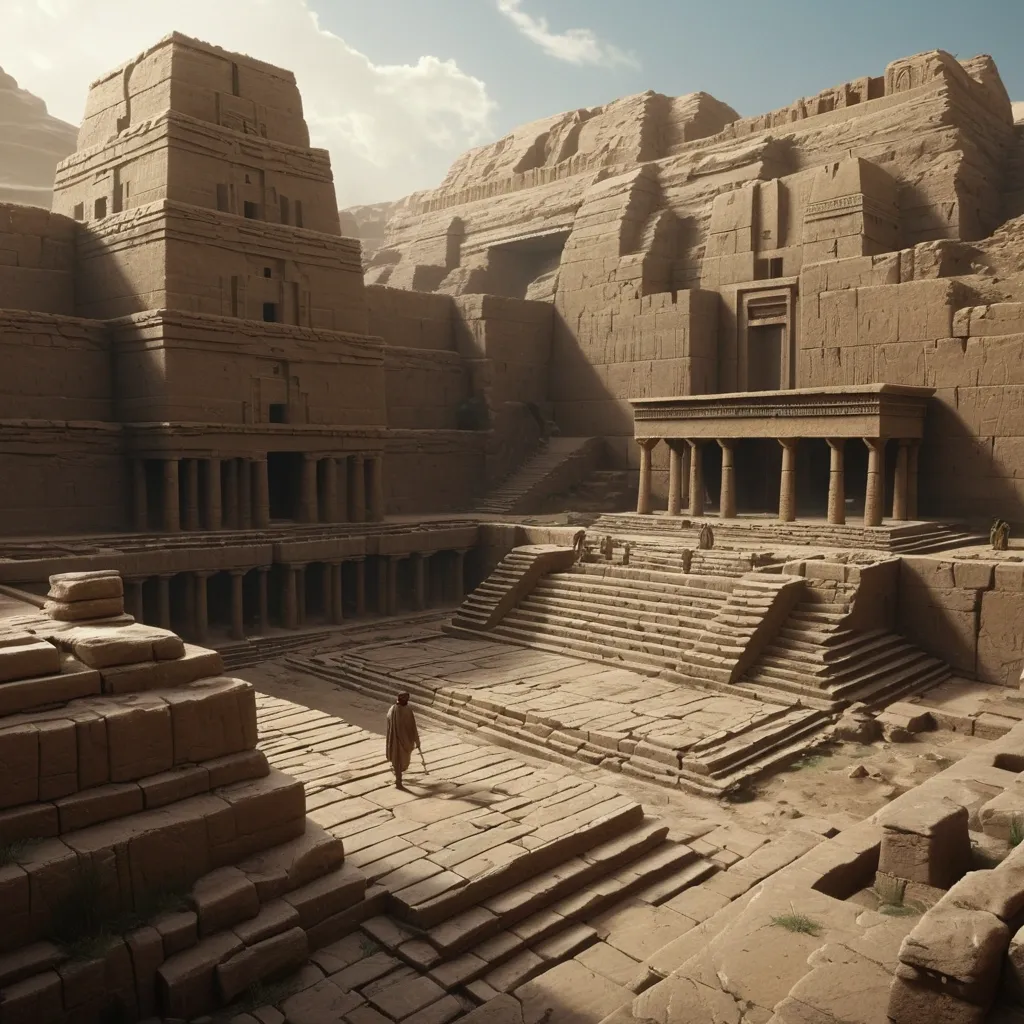Search Results for platform
Explore AI generated designs, images, art and prompts by top community artists and designers.

Generate Gorgeous female boss , bimbo , hourglass body , abnormally massive female bodybuilder , gorgeous , close up , full lips , big booty , redheaded , freckles on face and breast , braided design hair , feminine silhouette , too big breast , big booty , sexy thighs abs , silhouette , up close , flexing biceps , beautiful green eyes , legs are iconic and defining physical feature , both visually and in terms of combat ability.wearing an outfit that is a striking blend of elegance , power , and femininity , designed to command attention in any room. The suit is tailored to perfection , hugging the wearer’s curves with precision while emphasizing a structured silhouette. The fabric itself is a refined grey tweed patterned with subtle white grid lines , giving the suit a texture that feels both sophisticated and modern. The blazer features broad blue lapels and gold button accents , adding a luxurious touch that elevates the look beyond typical business attire. The matching high-waisted trousers elongate the frame , further enhancing the poised and commanding effect of the ensemble.The styling choices amplify the boldness of the suit. The inner blouse is a silky , greybutton-down shirt that complements the tweed’s tone while introducing a softer , feminine balance to the sharp tailoring of the jacket. The blouse peeks out neatly from under the blazer , maintaining elegance without drawing focus away from the suit’s commanding cut. Accessories are kept minimal yet intentional: a delicate layered gold necklace and hoop earrings that add glimmers of light and luxury without overpowering the outfit. The choice of voluminous , honey-brown braids cascading down her shoulders frames the face with both confidence and glamour , completing the commanding visual.Altogether , this look communicates a blend of authority and allure. It is business-ready yet fashion-forward , balancing corporate structure with vibrant femininity. The color palette blue , grey and gold avoids being overly delicate , instead embracing the richness of texture , structure , and presence. This is the kind of ensemble that speaks to ambition , sophistication , and personal style—ideal for someone who thrives in positions of influence but insists on expressing her individuality with bold elegance. It’s not just clothing—it’s a statement of power wrapped in grace. In luxury living legs that could crush a watermelon , skirt high boots are a bold and striking statement piece , crafted in glossy black patent leather that gives them a sleek , polished finish. Rising to just below the knee , the boots feature three adjustable buckle straps along the shaft , adding both edge and detail to their design. The towering stiletto heel , paired with a thick platform sole , creates an ultra-dramatic silhouette that elongates the leg and exudes power and confidence. With their combination of shine , height , and structure , these boots perfectly balance fierce femininity with high-fashion allure. Massive breast , massive cleavage , Up close shot , burgundy and beige subtle chevron velvet t-shirt ,

Generate Gorgeous female boss , bimbo , hourglass body , abnormally massive female bodybuilder , gorgeous , close up , full lips , big booty , dark brown shaved hair , freckles on face and breast , short pixie hair , feminine silhouette , too big breast , big booty , sexy thighs abs , silhouette , up close , flexing biceps , beautiful green eyes , legs are iconic and defining physical feature , both visually and in terms of combat ability.wearing an outfit that is a striking blend of elegance , power , and femininity , designed to command attention in any room. The suit is tailored to perfection , hugging the wearer’s curves with precision while emphasizing a structured silhouette. The fabric itself is a refined grey tweed patterned with subtle white grid lines , giving the suit a texture that feels both sophisticated and modern. The blazer features broad blue lapels and gold button accents , adding a luxurious touch that elevates the look beyond typical business attire. The matching high-waisted trousers elongate the frame , further enhancing the poised and commanding effect of the ensemble.The styling choices amplify the boldness of the suit. The inner blouse is a silky , greybutton-down shirt that complements the tweed’s tone while introducing a softer , feminine balance to the sharp tailoring of the jacket. The blouse peeks out neatly from under the blazer , maintaining elegance without drawing focus away from the suit’s commanding cut. Accessories are kept minimal yet intentional: a delicate layered gold necklace and hoop earrings that add glimmers of light and luxury without overpowering the outfit. The choice of voluminous , bald head frames the face with both confidence and glamour , completing the commanding visual.Altogether , this look communicates a blend of authority and allure. It is business-ready yet fashion-forward , balancing corporate structure with vibrant femininity. The color palette blue , grey and gold avoids being overly delicate , instead embracing the richness of texture , structure , and presence. This is the kind of ensemble that speaks to ambition , sophistication , and personal style—ideal for someone who thrives in positions of influence but insists on expressing her individuality with bold elegance. It’s not just clothing—it’s a statement of power wrapped in grace. In luxury living legs that could crush a watermelon , skirt high boots are a bold and striking statement piece , crafted in glossy black patent leather that gives them a sleek , polished finish. Rising to just below the knee , the boots feature three adjustable buckle straps along the shaft , adding both edge and detail to their design. The towering stiletto heel , paired with a thick platform sole , creates an ultra-dramatic silhouette that elongates the leg and exudes power and confidence. With their combination of shine , height , and structure , these boots perfectly balance fierce femininity with high-fashion allure. Generate Gorgeous female boss , bimbo , hourglass body , abnormally massive female bodybuilder , gorgeous , close up , full lips , big booty , redheaded , freckles on face and breast , braided design hair , feminine silhouette , too big breast , big booty , sexy thighs abs , silhouette , up close , flexing biceps , beautiful green eyes , legs are iconic and defining physical feature , both visually and in terms of combat ability.wearing an outfit that is a striking blend of elegance , power , and femininity , designed to command attention in any room. The suit is tailored to perfection , hugging the wearer’s curves with precision while emphasizing a structured silhouette. The fabric itself is a refined grey tweed patterned with subtle white grid lines , giving the suit a texture that feels both sophisticated and modern. The blazer features broad blue lapels and gold button accents , adding a luxurious touch that elevates the look beyond typical business attire. The matching high-waisted trousers elongate the frame , further enhancing the poised and commanding effect of the ensemble.The styling choices amplify the boldness of the suit. The inner blouse is a silky , greybutton-down shirt that complements the tweed’s tone while introducing a softer , feminine balance to the sharp tailoring of the jacket. The blouse peeks out neatly from under the blazer , maintaining elegance without drawing focus away from the suit’s commanding cut. Accessories are kept minimal yet intentional: a delicate layered gold necklace and hoop earrings that add glimmers of light and luxury without overpowering the outfit. The choice of voluminous , honey-brown braids cascading down her shoulders frames the face with both confidence and glamour , completing the commanding visual.Altogether , this look communicates a blend of authority and allure. It is business-ready yet fashion-forward , balancing corporate structure with vibrant femininity. The color palette blue , grey and gold avoids being overly delicate , instead embracing the richness of texture , structure , and presence. This is the kind of ensemble that speaks to ambition , sophistication , and personal style—ideal for someone who thrives in positions of influence but insists on expressing her individuality with bold elegance. It’s not just clothing—it’s a statement of power wrapped in grace. In luxury living legs that could crush a watermelon , skirt high boots are a bold and striking statement piece , crafted in glossy black patent leather that gives them a sleek , polished finish. Rising to just below the knee , the boots feature three adjustable buckle straps along the shaft , adding both edge and detail to their design. The towering stiletto heel , paired with a thick platform sole , creates an ultra-dramatic silhouette that elongates the leg and exudes power and confidence. With their combination of shine , height , and structure , these boots perfectly balance fierce femininity with high-fashion allure. her Arms are held close to her body , under her chest at supporting her enormous breast , arms folded under enormous breast , massive chest , scowl on face , enormous breast , up close , , black tank top , camouflage shorts ,

Generate Gorgeous female boss , bimbo , hourglass body , abnormally massive female bodybuilder , gorgeous , close up , full lips , big booty , dark brown shaved hair , freckles on face and breast , short pixie hair , feminine silhouette , too big breast , big booty , sexy thighs abs , silhouette , up close , flexing biceps , beautiful green eyes , legs are iconic and defining physical feature , both visually and in terms of combat ability.wearing an outfit that is a striking blend of elegance , power , and femininity , designed to command attention in any room. The suit is tailored to perfection , hugging the wearer’s curves with precision while emphasizing a structured silhouette. The fabric itself is a refined grey tweed patterned with subtle white grid lines , giving the suit a texture that feels both sophisticated and modern. The blazer features broad blue lapels and gold button accents , adding a luxurious touch that elevates the look beyond typical business attire. The matching high-waisted trousers elongate the frame , further enhancing the poised and commanding effect of the ensemble.The styling choices amplify the boldness of the suit. The inner blouse is a silky , greybutton-down shirt that complements the tweed’s tone while introducing a softer , feminine balance to the sharp tailoring of the jacket. The blouse peeks out neatly from under the blazer , maintaining elegance without drawing focus away from the suit’s commanding cut. Accessories are kept minimal yet intentional: a delicate layered gold necklace and hoop earrings that add glimmers of light and luxury without overpowering the outfit. The choice of voluminous , bald head frames the face with both confidence and glamour , completing the commanding visual.Altogether , this look communicates a blend of authority and allure. It is business-ready yet fashion-forward , balancing corporate structure with vibrant femininity. The color palette blue , grey and gold avoids being overly delicate , instead embracing the richness of texture , structure , and presence. This is the kind of ensemble that speaks to ambition , sophistication , and personal style—ideal for someone who thrives in positions of influence but insists on expressing her individuality with bold elegance. It’s not just clothing—it’s a statement of power wrapped in grace. In luxury living legs that could crush a watermelon , skirt high boots are a bold and striking statement piece , crafted in glossy black patent leather that gives them a sleek , polished finish. Rising to just below the knee , the boots feature three adjustable buckle straps along the shaft , adding both edge and detail to their design. The towering stiletto heel , paired with a thick platform sole , creates an ultra-dramatic silhouette that elongates the leg and exudes power and confidence. With their combination of shine , height , and structure , these boots perfectly balance fierce femininity with high-fashion allure. Generate Gorgeous female boss , bimbo , hourglass body , abnormally massive female bodybuilder , gorgeous , close up , full lips , big booty , redheaded , freckles on face and breast , braided design hair , feminine silhouette , too big breast , big booty , sexy thighs abs , silhouette , up close , flexing biceps , beautiful green eyes , legs are iconic and defining physical feature , both visually and in terms of combat ability.wearing an outfit that is a striking blend of elegance , power , and femininity , designed to command attention in any room. The suit is tailored to perfection , hugging the wearer’s curves with precision while emphasizing a structured silhouette. The fabric itself is a refined grey tweed patterned with subtle white grid lines , giving the suit a texture that feels both sophisticated and modern. The blazer features broad blue lapels and gold button accents , adding a luxurious touch that elevates the look beyond typical business attire. The matching high-waisted trousers elongate the frame , further enhancing the poised and commanding effect of the ensemble.The styling choices amplify the boldness of the suit. The inner blouse is a silky , greybutton-down shirt that complements the tweed’s tone while introducing a softer , feminine balance to the sharp tailoring of the jacket. The blouse peeks out neatly from under the blazer , maintaining elegance without drawing focus away from the suit’s commanding cut. Accessories are kept minimal yet intentional: a delicate layered gold necklace and hoop earrings that add glimmers of light and luxury without overpowering the outfit. The choice of voluminous , honey-brown braids cascading down her shoulders frames the face with both confidence and glamour , completing the commanding visual.Altogether , this look communicates a blend of authority and allure. It is business-ready yet fashion-forward , balancing corporate structure with vibrant femininity. The color palette blue , grey and gold avoids being overly delicate , instead embracing the richness of texture , structure , and presence. This is the kind of ensemble that speaks to ambition , sophistication , and personal style—ideal for someone who thrives in positions of influence but insists on expressing her individuality with bold elegance. It’s not just clothing—it’s a statement of power wrapped in grace. In luxury living legs that could crush a watermelon , skirt high boots are a bold and striking statement piece , crafted in glossy black patent leather that gives them a sleek , polished finish. Rising to just below the knee , the boots feature three adjustable buckle straps along the shaft , adding both edge and detail to their design. The towering stiletto heel , paired with a thick platform sole , creates an ultra-dramatic silhouette that elongates the leg and exudes power and confidence. With their combination of shine , height , and structure , these boots perfectly balance fierce femininity with high-fashion allure. her Arms are held close to her body , under her chest at supporting her enormous breast , arms folded under enormous breast , massive chest , scowl on face , enormous breast , up close , white tank top , blacj tank top , camouflage shorts ,

Generate Gorgeous 42 years old , female boss , dark-skinned African-American woman , pointy face , bimbo , hourglass body , abnormally massive female bodybuilder , gorgeous , close up , full lips , big booty , afro , feminine silhouette , too big breast , big booty , sexy thighs abs , black hair , silhouette , up close , flexing biceps , gorgeous light reflecting brown eyes , legs are iconic and defining physical feature , both visually and in terms of combat ability.wearing an outfit that is a striking blend of elegance , power , and femininity , designed to command attention in any room. The suit is tailored to perfection , hugging the wearer’s curves with precision while emphasizing a structured silhouette. The fabric itself is a refined grey tweed patterned with subtle white grid lines , giving the suit a texture that feels both sophisticated and modern. The blazer features broad blue lapels and gold button accents , adding a luxurious touch that elevates the look beyond typical business attire. The matching high-waisted trousers elongate the frame , further enhancing the poised and commanding effect of the ensemble.The styling choices amplify the boldness of the suit. The inner blouse is a silky , greybutton-down shirt that complements the tweed’s tone while introducing a softer , feminine balance to the sharp tailoring of the jacket. The blouse peeks out neatly from under the blazer , maintaining elegance without drawing focus away from the suit’s commanding cut. Accessories are kept minimal yet intentional: a delicate layered gold necklace and hoop earrings that add glimmers of light and luxury without overpowering the outfit. The choice of voluminous , honey-brown braids cascading down her shoulders frames the face with both confidence and glamour , completing the commanding visual.Altogether , this look communicates a blend of authority and allure. It is business-ready yet fashion-forward , balancing corporate structure with vibrant femininity. The color palette blue , grey and gold avoids being overly delicate , instead embracing the richness of texture , structure , and presence. This is the kind of ensemble that speaks to ambition , sophistication , and personal style—ideal for someone who thrives in positions of influence but insists on expressing her individuality with bold elegance. It’s not just clothing—it’s a statement of power wrapped in grace. In luxury living legs that could crush a watermelon , skirt high boots are a bold and striking statement piece , crafted in glossy black patent leather that gives them a sleek , polished finish. Rising to just below the knee , the boots feature three adjustable buckle straps along the shaft , adding both edge and detail to their design. The towering stiletto heel , paired with a thick platform sole , creates an ultra-dramatic silhouette that elongates the leg and exudes power and confidence. With their combination of shine , height , and structure , these boots perfectly balance fierce femininity with high-fashion allure. High cheekbones , prominent jawline , black hair , gorgeous big gorgeous light reflecting brown eyes , enormous breast , rose red and ivory white floral dress shirt , red rose skirt standing in tech room. ,

Generate Gorgeous female boss , bimbo , hourglass body , abnormally massive female bodybuilder , gorgeous , close up , full lips , big booty , redheaded , freckles on face and breast , braided design hair , feminine silhouette , too big breast , big booty , sexy thighs abs , silhouette , up close , flexing biceps , beautiful green eyes , legs are iconic and defining physical feature , both visually and in terms of combat ability.wearing an outfit that is a striking blend of elegance , power , and femininity , designed to command attention in any room. The suit is tailored to perfection , hugging the wearer’s curves with precision while emphasizing a structured silhouette. The fabric itself is a refined grey tweed patterned with subtle white grid lines , giving the suit a texture that feels both sophisticated and modern. The blazer features broad blue lapels and gold button accents , adding a luxurious touch that elevates the look beyond typical business attire. The matching high-waisted trousers elongate the frame , further enhancing the poised and commanding effect of the ensemble.The styling choices amplify the boldness of the suit. The inner blouse is a silky , greybutton-down shirt that complements the tweed’s tone while introducing a softer , feminine balance to the sharp tailoring of the jacket. The blouse peeks out neatly from under the blazer , maintaining elegance without drawing focus away from the suit’s commanding cut. Accessories are kept minimal yet intentional: a delicate layered gold necklace and hoop earrings that add glimmers of light and luxury without overpowering the outfit. The choice of voluminous , honey-brown braids cascading down her shoulders frames the face with both confidence and glamour , completing the commanding visual.Altogether , this look communicates a blend of authority and allure. It is business-ready yet fashion-forward , balancing corporate structure with vibrant femininity. The color palette blue , grey and gold avoids being overly delicate , instead embracing the richness of texture , structure , and presence. This is the kind of ensemble that speaks to ambition , sophistication , and personal style—ideal for someone who thrives in positions of influence but insists on expressing her individuality with bold elegance. It’s not just clothing—it’s a statement of power wrapped in grace. In luxury living legs that could crush a watermelon , skirt high boots are a bold and striking statement piece , crafted in glossy black patent leather that gives them a sleek , polished finish. Rising to just below the knee , the boots feature three adjustable buckle straps along the shaft , adding both edge and detail to their design. The towering stiletto heel , paired with a thick platform sole , creates an ultra-dramatic silhouette that elongates the leg and exudes power and confidence. With their combination of shine , height , and structure , these boots perfectly balance fierce femininity with high-fashion allure. Massive breast , massive cleavage , Up close shot ,

Generate Gorgeous female boss , bimbo , hourglass body , abnormally massive female bodybuilder , gorgeous , close up , full lips , big booty , dark brown shaved hair , freckles on face and breast , short pixie hair , feminine silhouette , too big breast , big booty , sexy thighs abs , silhouette , up close , flexing biceps , beautiful green eyes , legs are iconic and defining physical feature , both visually and in terms of combat ability.wearing an outfit that is a striking blend of elegance , power , and femininity , designed to command attention in any room. The suit is tailored to perfection , hugging the wearer’s curves with precision while emphasizing a structured silhouette. The fabric itself is a refined grey tweed patterned with subtle white grid lines , giving the suit a texture that feels both sophisticated and modern. The blazer features broad blue lapels and gold button accents , adding a luxurious touch that elevates the look beyond typical business attire. The matching high-waisted trousers elongate the frame , further enhancing the poised and commanding effect of the ensemble.The styling choices amplify the boldness of the suit. The inner blouse is a silky , greybutton-down shirt that complements the tweed’s tone while introducing a softer , feminine balance to the sharp tailoring of the jacket. The blouse peeks out neatly from under the blazer , maintaining elegance without drawing focus away from the suit’s commanding cut. Accessories are kept minimal yet intentional: a delicate layered gold necklace and hoop earrings that add glimmers of light and luxury without overpowering the outfit. The choice of voluminous , bald head frames the face with both confidence and glamour , completing the commanding visual.Altogether , this look communicates a blend of authority and allure. It is business-ready yet fashion-forward , balancing corporate structure with vibrant femininity. The color palette blue , grey and gold avoids being overly delicate , instead embracing the richness of texture , structure , and presence. This is the kind of ensemble that speaks to ambition , sophistication , and personal style—ideal for someone who thrives in positions of influence but insists on expressing her individuality with bold elegance. It’s not just clothing—it’s a statement of power wrapped in grace. In luxury living legs that could crush a watermelon , skirt high boots are a bold and striking statement piece , crafted in glossy black patent leather that gives them a sleek , polished finish. Rising to just below the knee , the boots feature three adjustable buckle straps along the shaft , adding both edge and detail to their design. The towering stiletto heel , paired with a thick platform sole , creates an ultra-dramatic silhouette that elongates the leg and exudes power and confidence. With their combination of shine , height , and structure , these boots perfectly balance fierce femininity with high-fashion allure. Generate Gorgeous female boss , bimbo , hourglass body , abnormally massive female bodybuilder , gorgeous , close up , full lips , big booty , redheaded , freckles on face and breast , braided design hair , feminine silhouette , too big breast , big booty , sexy thighs abs , silhouette , up close , flexing biceps , beautiful green eyes , legs are iconic and defining physical feature , both visually and in terms of combat ability.wearing an outfit that is a striking blend of elegance , power , and femininity , designed to command attention in any room. The suit is tailored to perfection , hugging the wearer’s curves with precision while emphasizing a structured silhouette. The fabric itself is a refined grey tweed patterned with subtle white grid lines , giving the suit a texture that feels both sophisticated and modern. The blazer features broad blue lapels and gold button accents , adding a luxurious touch that elevates the look beyond typical business attire. The matching high-waisted trousers elongate the frame , further enhancing the poised and commanding effect of the ensemble.The styling choices amplify the boldness of the suit. The inner blouse is a silky , greybutton-down shirt that complements the tweed’s tone while introducing a softer , feminine balance to the sharp tailoring of the jacket. The blouse peeks out neatly from under the blazer , maintaining elegance without drawing focus away from the suit’s commanding cut. Accessories are kept minimal yet intentional: a delicate layered gold necklace and hoop earrings that add glimmers of light and luxury without overpowering the outfit. The choice of voluminous , honey-brown braids cascading down her shoulders frames the face with both confidence and glamour , completing the commanding visual.Altogether , this look communicates a blend of authority and allure. It is business-ready yet fashion-forward , balancing corporate structure with vibrant femininity. The color palette blue , grey and gold avoids being overly delicate , instead embracing the richness of texture , structure , and presence. This is the kind of ensemble that speaks to ambition , sophistication , and personal style—ideal for someone who thrives in positions of influence but insists on expressing her individuality with bold elegance. It’s not just clothing—it’s a statement of power wrapped in grace. In luxury living legs that could crush a watermelon , skirt high boots are a bold and striking statement piece , crafted in glossy black patent leather that gives them a sleek , polished finish. Rising to just below the knee , the boots feature three adjustable buckle straps along the shaft , adding both edge and detail to their design. The towering stiletto heel , paired with a thick platform sole , creates an ultra-dramatic silhouette that elongates the leg and exudes power and confidence. With their combination of shine , height , and structure , these boots perfectly balance fierce femininity with high-fashion allure. her Arms are held close to her body , under her chest at supporting her enormous breast , arms folded under enormous breast , massive chest , scowl on face , enormous breast , up close , white tank top , white tank top ,

A 27-year-old blonde woman , muscular with huge , bulging muscles and large breast implants , wearing a red two-piece bodybuilding swimsuit , with large hips and thick , muscular legs , is standing , covering her chest with her arms , with a shocked and surprised expression. She is standing on a gray bodybuilding platform with a competition screen in the background. ,

A vast ancient Eastern immortal cultivation sect spread across towering mist-shrouded mountains , shown in a wide panoramic landscape view. Countless temple complexes , layered pagodas , floating pavilions , and skybridges stretch horizontally across the scene , creating a sweeping , expansive vista. Massive cliffs , winding stone stairways , and suspended platforms extend left to right , emphasizing width. Dense rolling fog fills the valleys , lanterns glow softly through the mist , and drifting spiritual talismans light up the air. Ancient dragon statues and celestial beast carvings emerge faintly from the haze. Streams of glowing qi flow across the mountains like rivers of light. Dark storm clouds gather overhead , lightning crackling across the sky and illuminating floating mountains and distant immortal palaces. Disciples on flying swords and spirit beasts traverse the misty expanse. Cinematic panoramic framing , ultra-detailed environment , high-fantasy style , intricate architecture , dramatic lighting , widescreen landscape composition. —ar 16:9 ,

photoralistic full lenght , a beautiful european pale female with wavy shoulder brown hair in her mid thirties gentle smile , wearing opened wide zipper short dark-blue swimsuit , is standing on the bridge of a boat , scuba equipment is posed next to her , she's looking at a futuristic sea platform in the background , sunny day , cinematic style ,

photoralistic full lenght , a beautiful european pale female with wavy shoulder brown hair in her mid thirties gentle smile , wearing opened wide zipper short dark-blue swimsuit , is standing on the bridge of a boat , scuba equipment is posed next to her , she's looking at a futuristic sea platform in the background , sunny day , cinematic style ,

photoralistic full lenght , a beautiful face , slender body , european pale female with wavy shoulder auburn hair in her mid thirties , wearing opened wide zipper short dark-purple swimsuit , is kneeling on the bridge of a boat , scuba equipment is posed next to her , she's looking at a futuristic sea platform in the background , suny day , cinematic style ,

photoralistic full lenght , a beautiful european pale female with wavy shoulder auburn hair in her mid thirties , wearing opened wide zipper short dark-purple swimsuit , is standing on the bridge of a boat , scuba equipment is posed next to her , she's lookin at a futuristic sea platform in the background , suny day , cinematic style ,

photoralistic full lenght , a beautiful european pale female with wavy shoulder auburn hair in her mid thirties , wearing opened wide zipper short dark-purple swimsuit , is kneeling on the bridge of a boat , scuba equipment is posed next to her , she's looking at a futuristic sea platform in the background , suny day , cinematic style ,

photoralistic full lenght , a beautiful european pale female with wavy shoulder auburn hair in her mid thirties , wearing opened wide zipper short dark-purple swimsuit , is standing on the bridge of a boat , scuba equipment is posed next to her , she's lookin at a futuristic sea platform in the background , suny day , cinematic style ,

Here's the 3D big head caricature of the Indian man , this time waving from a dragon flying over futuristic vertical garden city where crystalline skyscrapers spiral toward purple storm clouds , its delicate antennae transmitting golden light beams that nurture floating botanical platforms teeming with bioluminescent flowers and cascading waterfalls that shimmer in the perpetual twilight of this utopian sky realm. ,

full lenght , a beautiful european pale female with wavy shoulder brown hair in her mid twenty , wearing blue opened wide zipper openside shorty suit , is standing on the bridge of a boat , she have a futuristic laser gun in right hand , scuba equipment is posed next to her , she's looking at a futuristic sea platform in the background , it's night , cinematic style ,

full lenght , a beautiful european pale female with wavy shoulder brown hair in her mid thirty , wearing blue opened wide zipper openside shorty suit , is standing on the bridge of a boat , she have a futuristic laser gun in right hand , scuba equipment is posed next to her , she's looking at a futuristic sea platform in the background , it's night , cinematic style ,

full lenght , a beautiful european pale female with wavy shoulder brown hair in her mid thirty , wearing blue opened wide zipper openside shorty suit , is standing on the bridge of a boat , she have a futuristic laser gun in right hand , scuba equipment is posed next to her , she's looking at a futuristic sea platform in the background , it's night , cinematic style ,

full lenght , a beautiful european pale female with wavy shoulder auburn hair in her mid thirty , wearing blue opened wide zipper openside shorty suit , is standing on the bridge of a boat , scuuba equipment is posed next to her , she's lookin at a futuristic sea platform in the background , suny day , cinematic style ,

full lenght , a beautiful european pale female with wavy shoulder auburn hair in her mid thirty , wearing blue opened wide zipper openside shorty suit , is standing on the bridge of a boat , scuuba equipment is posed next to her , she's lookin at a futuristic sea platform in the background , suny day , cinematic style ,

full lenght , a beautiful european pale female with wavy shoulder auburn hair in her mid thirty , wearing blue opened wide zipper openside shorty suit , is standing on the bridge of a boat , scuuba equipment is posed next to her , she's lookin at a futuristic sea platform in the background , suny day , cinematic style ,

full lenght , a beautiful european pale female with wavy shoulder auburn hair in her mid twenty , wearing opened wide zipper short scubba shorty suit , is standing on the bridge of a boat , scuuba equipment is posed next to her , she's lookin at a futuristic sea platform in the background , suny day , cinematic style ,

full lenght , a beautiful european pale female with wavy shoulder auburn hair in her mid twenty , wearing opened wide zipper short scubba suit , is standing on the bridge of a boat , scuuba equipment is posed next to her , she's lookin at a futuristic sea platform in the background , suny day , cinematic style ,

An image for the content that may follow. Be creative and use only relevant terms. Customize it in the best way that below is just it's caption ### **Caption:** 🔥 **Need Help with Rare or Tough Proctored Exams?** 💻📚 Struggling with **QQ , TOEFL , SEB , GED OnVUE , PSI , HonorLock , Proctorio , LockDown Browser , ProctorTrack , ETS , GRE , CLEP , Examplify , ProctorU , CompTia , or Prometric?** You’re in the right place! 🎯 I offer **expert exam assistance** with **practice simulations** and **advanced support** for all major proctoring platforms. 💰✅ 📩 **DM me for details**—let’s make your exam experience stress-free! 🚀 -- ,

A message to include in the post for the below caption of the image you're going to generate: If your customer buys once , you made a sale. If they come back , you built trust. If they tell others , you built a brand. --- ### **Caption:** 🔥 **Need Help with Rare or Tough Proctored Exams?** 💻📚 Struggling with **QQ , TOEFL , SEB , GED OnVUE , PSI , HonorLock , Proctorio , LockDown Browser , ProctorTrack , ETS , GRE , CLEP , Examplify , ProctorU , CompTia , or Prometric?** You’re in the right place! 🎯 I offer **expert exam assistance** with **practice simulations** and **advanced support** for all major proctoring platforms. **Pay only after your exam!** 💰✅ 📩 **DM me for details**—let’s make your exam experience stress-free! 🚀 --- ### **Hashtags:** #ExamHelp #ProctoredExams #OnlineExamSupport #TOEFLHelp #SEBExam #GEDOnVUE #PSIExam #HonorLock #Proctorio #LockDownBrowser #ProctorTrack #ETSExams #GREHelp #CLEPExam #Examplify #ProctorU #CompTia #Prometric #ExamAssistance #PayAfterExam #ExamSuccess #StressFreeExams #ExamSupport #OnlineExamHelp #ExamSimulations #ExamPrep #TestHelp #ExamExpert ,

Arcane laboratory and meeting chamber inside the upper levels of the clocktower. Central feature: the Resonator Table , a large circular platform etched with glowing runes and three radiant discs (red , blue , silver). Surrounding it: floating quills , suspended crystal instruments , scroll racks , and a ring of arcane projectors casting sigils into the air. Iron walkways and rails overlook the lower levels; the city skyline visible through glass arches. Subtle steampunk details — coils , wires , rune conduits. Lighting: cool white glow mixed with candlelight , magical aura highlights faces. Camera: wide shot from stair entrance , capturing the table and upper gantries. Style: cinematic , semi-realistic fantasy art with precise metallic reflections. ,



